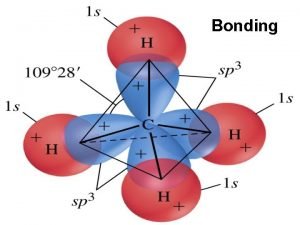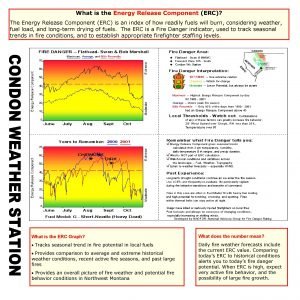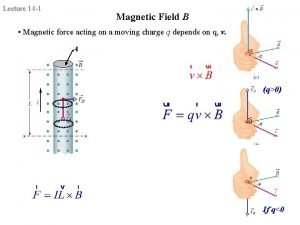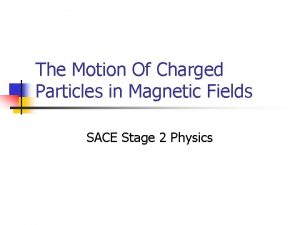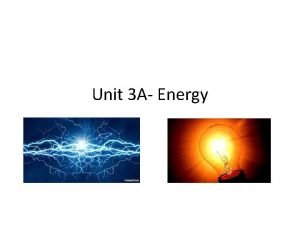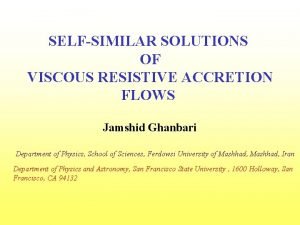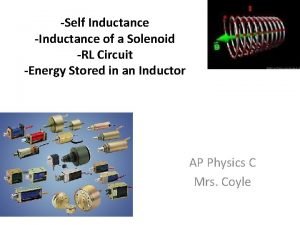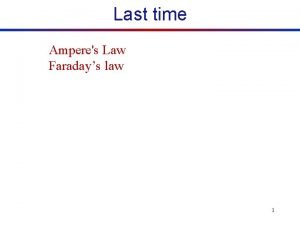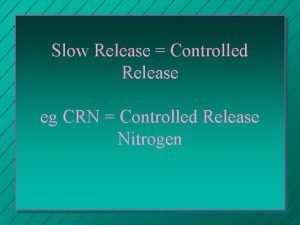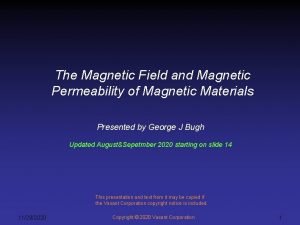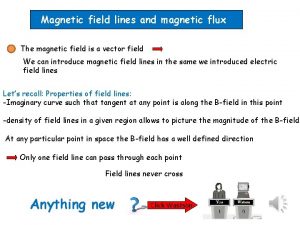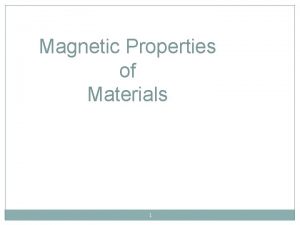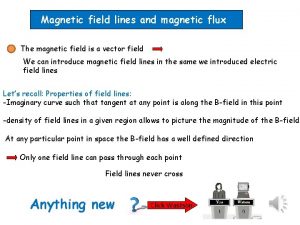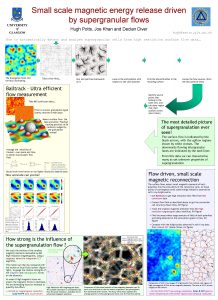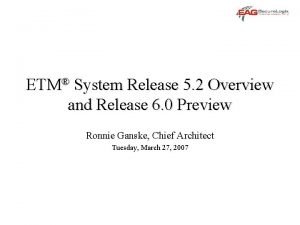17 Magnetic Energy Release Magnetic Energy Release 1




































- Slides: 36

17. Magnetic Energy Release

Magnetic Energy Release 1. 2. 3. 4. 5. 6. Solar Energetic Phenomena Energy Equation Two Types of Magnetic Energy Release Rapid Dissipation: Sweet’s Mechanism Petschek’s Mechanism Numerical Models of Magnetic Reconnection 7. Observations of Magnetic Reconnection


Observations of emerging magnetic flux and magnetic energy release in EUV from TRACE satellite






Example: The Poynting Flux and Coronal Heating (B. Welsch) The magnetic energy balance: FP Assume the ideal MHD approximation and integrate this equation over a volume in the atmosphere with the bottom boundary in the photosphere and apply the Gauss theorem: It was found that the average FP is sufficient to explain coronal heating, with values near (5± 1)× 107 erg cm− 2 s− 1. The energy flux required for coronal heating ~ 107 erg cm− 2 s− 1, for chromospheric heating: 2× 107 erg cm− 2 s− 1 (Welsch, 2015, Publ. Astr. Soc. Jap. 67 (2), 18).

kinetic energy flux enthalpy flux Poynting flux







Example: formation of thin current sheets due to winding of magnetic field lines by photospheric motions (Parker)



Calculation of the characteristic reconnection time (Parker, 1957)



Physical Interpretation of Petschek's Solution (Semenov) temporarily enhanced “anomalous” resistivity Anomalous resistivity may occur as a result of plasma instabilities in regions of high electric current density when the speed of electrons reaches the speed of plasma waves, or due to small-scale turbulence. Anomalous resistivity may significantly decrease the dissipation time. Petschek (quasi-steady Reconnection regime):



Electric current density

Evolution of plasma temperature and density

Observational evidence for magnetic reconnection – plasma heating at the top of magnetic loops Gallagher et al. , Solar Phys. 2002

X-ray sources during the 2002/08/24 X 3. 1 flare Solar limb Thermal emission 34 MK 43 MK 12 -18 ke. V 12 - 25 ke. V 25 - 40 ke. V


Geometrical model of magnetic loops The three-dimensional geometry of the four involved magnetic field lines with circular segments, additionally constrained by the geometric condition that the two pre-reconnection field lines have to intersect each other at the onset of the reconnection process, leading to a 10 parameter model. They fit this 10 parameter model to Yohkoh Soft and Hard X-Ray Telescopes (SXT and HXT) data of 10 solar flares and determine in this way the loop sizes and relative orientation of interacting field lines before and after reconnection.

Fitting the model to X-ray images of magnetic loops


Recent development – models and observations of “slipping” reconnection: the footpoints of reconnecting magnetic lines “slip” along the flare ribbons of a “J-shape” that is formed by a overlying flux rope (Javier, et al, 2014, Ap. J, 788: 60, 1)

Reconnection experiments MRX • Magnetic Reconnection e. Xperiment (Princeton) Te 50, 000 - 300, 000 K, ne 0. 1 - 1. 5 1020 m -3, B 0. 5 k. G Yamada et al, 1997, Ji et al, 2001). . .
 Difference between extended release and sustained release
Difference between extended release and sustained release Extended release vs sustained release
Extended release vs sustained release Extended release vs sustained release
Extended release vs sustained release Hysteresis loop magnetism
Hysteresis loop magnetism Weber magnetic field
Weber magnetic field Magnetic moment and magnetic field relation
Magnetic moment and magnetic field relation Force on charged particle
Force on charged particle Final energy quick check
Final energy quick check Does formation of bonds release energy
Does formation of bonds release energy How does atp release energy
How does atp release energy Does formation of bonds release energy
Does formation of bonds release energy Energy release component
Energy release component The sudden release of energy stored in rocks causes a(n)
The sudden release of energy stored in rocks causes a(n) Chemical reactions that release energy are called
Chemical reactions that release energy are called Energy energy transfer and general energy analysis
Energy energy transfer and general energy analysis Energy energy transfer and general energy analysis
Energy energy transfer and general energy analysis What is magnetic energy examples
What is magnetic energy examples Magnetostatic field
Magnetostatic field Potential energy magnetic field
Potential energy magnetic field Kinetic energy magnetic field
Kinetic energy magnetic field What is magnetic energy
What is magnetic energy Magnetic energy
Magnetic energy Energy density of solenoid formula
Energy density of solenoid formula Conductor
Conductor Magnetic hair brush benefits
Magnetic hair brush benefits Energy of magnetic field formula
Energy of magnetic field formula Magnetic energy formula
Magnetic energy formula The most potent stimulus for erythropoiesis
The most potent stimulus for erythropoiesis Ilis yangming
Ilis yangming Telex release
Telex release Telex release b/l
Telex release b/l Data cube release
Data cube release Interview release form documentary
Interview release form documentary Pressure and release model
Pressure and release model Sugar-coated tablets examples
Sugar-coated tablets examples Sustained release
Sustained release Octopus deploy demo
Octopus deploy demo










